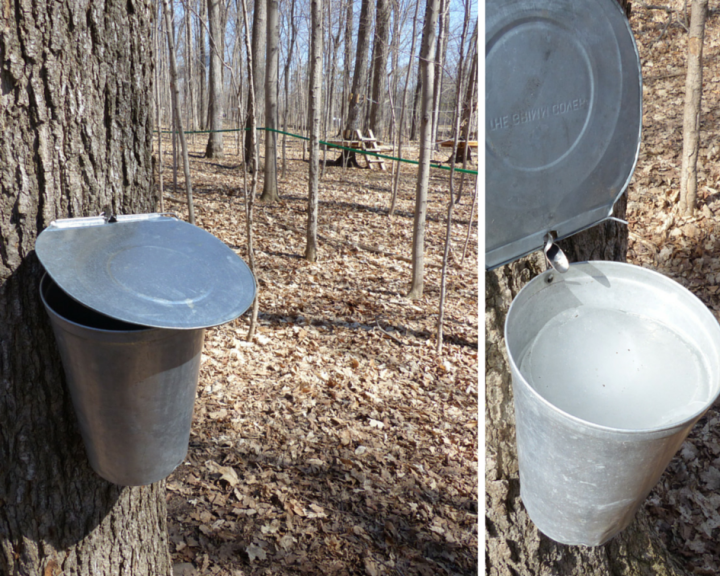Visiting the Sugarbush Maple Syrup Festival at Bruce’s Mill, Ontario
At the end of March we ticked another thing off our bucket list, and paid a visit to a festival celebrating one of the enduring icons of Canada – maple syrup!
Unsurprisingly, Canada is the world’s largest maple syrup producer. In fact, if you took the province of Quebec in isolation, it’d be the largest producer in the world without the rest of Canada chucked in. Fortunately though, we didn’t have to travel all the way to Quebec for our maple syrup festival, as Ontario has its fair share of maple trees too.

Taking advantage of a special Car2Go offer, we drove around 30-40 minutes north of Toronto to the Bruce’s Mill Conservation Area in Whitchurch-Stouffville (Stouffville is pronounced Stoweville apparently). We made a video of our time there, which you can check out below or here on YouTube.
As spring is now in full swing (not that you would you know it after a cold preceding week in Toronto), this was the perfect time for collecting sap from which maple syrup is made. With daytime temperatures exceeding 0 degrees and nighttime temperatures dropping below 0, this creates the ideal conditions for the sap to flow.
Arriving at the festival it soon became obvious that we had missed the memo to bring a small child or two with us. However, undeterred, we took a look around the festival ‘hub’. This consisted of an animal petting area; a ‘ride the (chained up in a small circle) donkey’; some men selling honey and other homemade products; the maple cafe; a general store which sold very expensive maple syrup (which we didn’t think had been produced locally either. FYI – it’s cheaper to buy it from Loblaws); a unicycling juggling man; and some horse drawn carriage rides, which at $1 a head for a very short ride, seemed a bit cheeky.
We looked at the menagerie of animals in the petting area before heading off on the ‘Maple Syrup Trail’. Taking you through the local woodland, the trail shows off the method through which maple sap is collected – a spile is driven into the tree, which then draws the sap out into a collecting bucket. In modern, mass-production times though, rather than individual buckets, the sap is more likely to be transported from the trees in a network of tubes.
Maple syrup is of course golden brown, whereas the liquid that these buckets were collecting looked like water. This is because at this stage the sap contains only 2% sugar. Only once the sap is extensively boiled does it reduce down to some yummy maple syrup. To help picture the amount of sap needed, you need 40 buckets of sap to get 1 bucket of syrup!


Of course, it wouldn’t be a true maple syrup festival if we didn’t get to try any of the product in question. We had come in high hopes of being able to consume vast quantities of syrup, but unfortunately we only managed to get two small samples each. It was delicious though, and felt a lot thicker than normal maple syrup.

Having finished the trail by looking at various methods of boiling sap from down the ages, we had a go on the zipline at the conservation area. This is part of a larger tree top trekking adventure, which doesn’t open for the year until April.
The zipline is 600ft long, so a decent length, but definitely not as fast, long or high as those we had experienced at Grouse Mountain. For $10 each it was a reasonable price, but given the amount of ‘training’ we had to go through beforehand, and the speed at which a zipline flies by, it would be nice if there was a second line to enjoy (irrespective of the wider tree top adventure).

We finished our day with a quick walk around a quieter part of the conservation area. There are a number of trails which you can do, which aren’t maintained during winter, hence Stewart demonstrating a very spectacular slip on a patch of ice. Fortunately he styled it out very well and was able to save himself and his camera from any damage!

Whilst it was interesting to see how the maple syrup is made and taste some, the festival was definitely geared towards young children and since we’ve seen it now I don’t think we will bother going again next year given the price.
Stewart and Emma
Cost
The Maple Syrup Festival at Bruce’s Mill Conservation Area costs $8.85 per adult (plus tax) with reduced rates for seniors and children.
Maple syrup facts
- Sugar maples are the best trees for making maple syrup, as they produce the sweetest sap. Red, black and silver maples also make good syrup.
- Long before the arrival of Europeans, Native Americans were the first to discover that maple sap could be used for food and energy. It took them a long time to boil the sap down to syrup. As syrup was difficult to store, all of the water was evaporated from the sap to make pure maple sugar. This could be used on hunting trips or over the summer.
- Native Americans used bowls made from clay, bark or wood to collect sap. Colonists from Europe introduced wood and then metal buckets.
- Nowadays the sap if often piped directly from the tree using plastic vacuum tubes.
- The flowing of sap is one of the first signs of spring. When winter ends, the maple trees awaken from their winter slumber.
- The maple syrup season can last anywhere from 10 days to a month, until the trees start to bud.
- Cooking the maple sap for a longer time and higher temperatures produces different maple products, such as syrup, butter, taffy and sugar.



One thought on “A festival dedicated to maple syrup? Oh yes!”